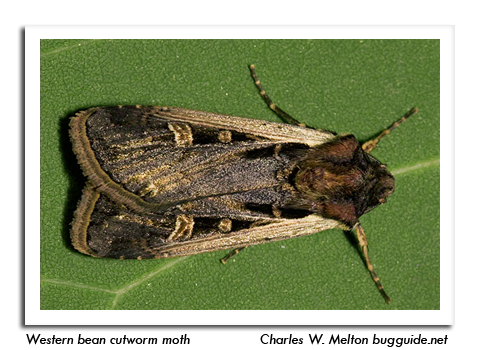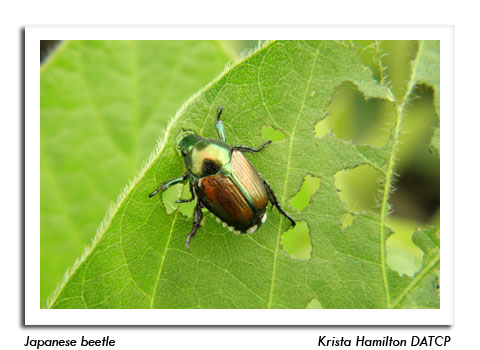
 |
|
|
Looking Ahead
Volume 58 Number 10 Date 07/11/2013 WESTERN BEAN CUTWORM - The annual flight is under way in the southern, central and western portions of the state where pheromone traps registered 1-2 moths from July 4-10. Twenty five percent emergence of the adult population is anticipated in the next two weeks as far north as Hancock in Waushara County, or around 1,320 degree days (base 50°F). Cornfields in the pretassel stage are preferred oviposition sites and should be inspected for eggs and small larvae in the week ahead. EUROPEAN CORN BORER - The treatment window for first generation larvae has closed near Beloit, Madison, La Crosse, Sullivan and other locations where 1,100 degree days (modified base 50°F) were surpassed as of July 10. Larvae are entering the midribs of corn leaves, although feeding is still mostly confined to the whorls. Insecticidal control remains an option in the southeast, central, east-central and northern counties for a few more days. Sweet corn and vegetable growers concerned about European corn borer damage should assess infestations now and apply controls before the larvae bore into the stalks and stems of plants where they are protected from chemical sprays. CORN ROOTWORM - Beetles are appearing in low numbers in Dane and Rock counties. These insects will become increasingly abundant throughout July, with the peak of emergence expected by mid-August. If lodging occurs this month, corn roots must be closely evaluated to verify corn rootworm larvae as the cause of the damage. Growers of Bt-rootworm corn hybrids with the Cry3Bb1 trait (Monsanto's YieldGard RW and VT Triple products) who experience poor root protection this season and suspect resistance are advised to notify their seed company representative. SOYBEAN APHID - Populations should be assessed in the week ahead as more soybean acreage enters the early reproductive stages of growth (R1-R2). At temperatures of 68-86°F, colonies can double in size every two days. Economic densities of 250 or more aphids per plant have not been detected in any Wisconsin soybean field surveyed to date, although a few sites have developed moderate populations of 100-142 aphids per plant since late June. JAPANESE BEETLE - Emergence of Japanese beetles has been noted in southern Wisconsin in the last two weeks and a report from Monroe County states that heavy populations have been observed in soybeans and corn in the Cataract area. Damage to fruit trees, perennials, nursery stock and field crops can be expected in the next 6-8 weeks across most of the state. Soil-applied systemic insecticide treatments should have been made several weeks ago and are no longer advised for beetle control. -- Krista Hamilton, DATCP Entomologist 





|
|
|